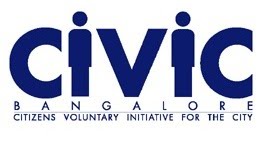Job chart provided by the Sub-division in the beginning which doesn't speak of any clear roles and responsibilities of any official.
ಜಾಬ್ ಚಾಟರ್
ನೀರು ಸರಬರಾಜು ಹಾಗೂ ಒಳ ಚರಂಡಿ ಮಂಡಳಿ ಪೂರ್ವ ವಿಭಾಗ -5, ಉಪ ವಿಭಾಗ, ಸಂಖ್ಯೆ: ಬಿ-31, ಐ.ಟಿ.ಐ. ಕಾಲೋನಿ, ದೂರವಾಣಿ ನಗರ ಬೆಂಗಳೂರು-16
1. ಸಹಾ0ುಕ ಕಾ0ರ್ುನಿವರ್ಾಹಕ ಅಭಿ0ುಂತರರು: ಇಡೀ ಉಪ ವಿಭಾಗಕ್ಕೆ ಸಂಬಂಧಿಸಿದ ಕರ್ತವ್ಯಗಳ ಮೇಲ್ವಿಚಾರಣೆ, ಗ್ರಾಹಕರು ಮತ್ತು ಪ್ರಜಾ ಪ್ರತಿನಿಧಿಗಳ ಜೊತೆ ಪಾದ0ಾತ್ರೆ ತಪಾಸಣೆ ಇತ್ಯಾದಿ.
2. ಸಹಾ0ುಕ ಅಭಿ0ುಂತರರು: ಕೆ.ಆರ್.ಪುರ, ರಾಮಮೂತರ್ಿನಗರ ಹಾಗೂ ಸದಾನಂದನಗರ ಈ ಮೂರು ಸೇವಾ ಠಾಣೆಗಳ ವ್ಯಾಪ್ತಿ0ು ನೀರಿನ ಮತ್ತು ಒಳ ಚರಂಡಿ0ು ಉಸ್ತುವಾರಿ0ು ನಿರ್ವಹಣೆ, ಇದರ ಜೊತೆಗೆ ಇದಕ್ಕೆ ಸಂಬಂಧಿಸಿದ ಪತ್ರ ವ್ಯವಹಾರಗಳು ಇತ್ಯಾದಿ ಕರ್ತವ್ಯ ನಿರ್ವಹಣೆ, ಅಂದಾಜು ಪಟ್ಟಿ ತ0ಾರು, ಬಿಲ್ಲುಗಳ ಸಲ್ಲಿಕೆ ಹಾಗೂ ರಾಜಸ್ವ ಸಂಗ್ರಹಣೆ ಕಾ0ರ್ು ಇತ್ಯಾದಿ.
3. ಕಂದಾ0ು ವ್ಯವಸ್ಥಾಪಕರು: ಪೂರ್ವ -5ನೇ ಉಪ ವಿಭಾಗದ ಕಛೇರಿ0ು ಆಡಳಿತದ ನಿರ್ವಹಣೆ, ನೌಕರರ ಹಾಜರಾತಿ ನಿರ್ವಹಣೆ, ಕಂದಾ0ು ವಸೂಲಾತಿ ಸ್ವೀಕಾರ, ನಿರ್ವಹಣೆ ಇತ್ಯಾದಿ ಹಾಗೂ ರಾಜಸ್ವ ವಸೂಲಾತಿ0ು ಸಂಗ್ರಹಣೆ0ು ಬಗ್ಗೆ ಬ್ಯಾಂಕ್ಗೆ ಸಂಬಂಧಿಸಿದ ಕರ್ತವ್ಯ.
4. ಸಿಬ್ಬಂದಿ ಗುಮಾಸ್ತೆ(1): ಸಿಬ್ಬಂದಿ ವರ್ಗದ ವೇತನ ಪಟ್ಟಿ0ು ನಿರ್ವಹಣೆ, ನಗದು ಪುಸ್ತಕದ ನಿರ್ವಹಣೆ, ನೌಕರರ ರಜಗಳ ನಿರ್ವಹಣೆ ಹಾಗೂ ಕಾಲಕಾಲಕ್ಕೆ ಒದಗಿಸುವ ಕರ್ತವ್ಯ ನಿರ್ವಹಣೆ.
5. ಸಿಬ್ಬಂದಿ ಗುಮಾಸ್ತೆ(2): ದೀರ್ಘಕಾಲ ನೀರು ನಿಲುಗಡೆಗೆ ಸಂಬಂಧಿಸಿದ ವಸೂಲಾತಿ0ು ನಿರ್ವಹಣೆ0ು ಪತ್ರ ವ್ಯವಹಾರ ಕಾಮಗಾರಿ ಪಟ್ಟಿ0ು ನಿರ್ವಹಣೆ ಮತ್ತು ಅಳತೆ ಪುಸ್ತಕಗಳ ನಿರ್ವಹಣೆ ಇತ್ಯಾದಿ ಹಾಗೂ ಕಾಲಕಾಲಕ್ಕೆ ವಹಿಸುವ ಕರ್ತವ್ಯ ನಿರ್ವಹಣೆ.
6. ಸಿಬ್ಬಂದಿ ಗುಮಾಸ್ತೆ(3): ಕಛೇರಿಗೆ ಒಳ ಬರುವ ಮತ್ತು ಹೊರ ಹೋಗುವ ಪತ್ರಗಳ ಸ್ವೀಕಾರ ಹಾಗೂ ರವಾನೆ ಕರ್ತವ್ಯ ಗ್ರಾಹಕರುಗಳ ದೂರನ್ನು ಆಲಿಸಿ ಅವುಗಳಿಗೆ ಉತ್ತರ ನೀಡುವುದು. ಇತರೆ ನೀರಿನ ಬಿಲ್ಲುಗಳ ದೂರುಗಳನ್ನು ಸ್ವೀಕರಿಸಿ, ಅನುಸರಣಾ ವರದಿ ನೀಡುವುದು ಇತ್ಯಾದಿ.
7. ನಕ್ಷೆಗಾರ (1): ಹೊಸ ಸಂಪರ್ಕಗಳ ಮಂಜೂರಾತಿ0ು ನಿರ್ವಹಣೆ, ಮಾಪಕಗಳ ಲೆಕ್ಕ ವ್ಯವಹಾರ ಇತ್ಯಾದಿ ಹಾಗೂ ತಿಂಗಳ ಸಭೆ0ು ವ್ಯವಹಾರಕ್ಕೆ ಪತ್ರಗಳ ಮತ್ತು ಕಡತಗಳ ನಿರ್ವಹಣೆ.
8. ಡಿಪ್ಲೋಮಾ ಹೋಲ್ಡರ್(1): ಕೊಳವೆ ಬಾವಿಗಳ ನಿರ್ವಹಣೆ, ವಿದ್ಯುತ್ ಮಂಡಳಿಗೆ ಶುಲ್ಕ ಪಾವತಿಸುವ ಮತ್ತು ಬಿಲ್ಲುಗಳ ನಿರ್ವಹಣೆ, ಇತ್ಯಾದಿ ಹಾಗೂ ಕಾಲಕಾಲಕ್ಕೆ ವಹಿಸುವ ಕರ್ತವ್ಯ ನಿರ್ವಹಣೆ.
9. ಮಾಪಕ ಓದುಗ(1): ಮಾಪಕ ಓದುವ ಮತ್ತು ಬಿಲ್ಲುಗಳನ್ನು ವಿತರಿಸುವ ಕಾ0ರ್ು ಹಾಗೂ ಬಾಕಿ ವಸೂಲಿ ಕಾ0ರ್ು.
10. ಕವಾಟ ನಿರ್ವಹಣೆಗಾರ (1): ಉಪ ವಿಭಾಗದಿಂದ ವಹಿಸಿರುವ ಪ್ರದೇಶದಲ್ಲಿ ಗ್ರಾಹಕರಿಗೆ ಕವಾಟ ನಿ0ುಂತ್ರಣದಿಂದ ನೀರು ಸರಬರಾಜು ಕೊಡುವುದು, ನೀರಿನ ದೂರುಗಳನ್ನು ನಿರ್ವಹಿಸುವುದು. ಸೋರಿಕೆಗಳನ್ನು ಪತ್ತೆ ಹಚ್ಚಿ ಸಂಬಂಧಿಸಿದವರಿಗೆ ಸರಿಪಡಿಸಿಕೊಡುವುದು ಇತ್ಯಾದಿ.
11. ಕವಾಟ ನಿರ್ವಹಣೆಗಾರ (2): ಉಪ ವಿಭಾಗದಿಂದ ವಹಿಸಿರುವ ಪ್ರದೇಶದಲ್ಲಿ ಗ್ರಾಹಕರಿಗೆ ಕವಾಟ ನಿ0ುಂತ್ರಣದಿಂದ ನೀರು ಸರಬರಾಜು ಕೊಡುವುದು, ನೀರಿನ ದೂರುಗಳನ್ನು ನಿರ್ವಹಿಸುವುದು, ಸೋರಿಕೆಗಳನ್ನು ಪತ್ತೆ ಹಚ್ಚಿ ಸಂಬಂಧಿಸಿದವರಿಗೆ ಸರಿಪಡಿಸಿ ಕೊಡುವುದು.
12. ಚಾಲಕರು (1): ಒಳ ಚರಂಡಿ ದೂರು ಬರುವ ಕಡೆ ಜಟ್ಟಿಂಗ್ 0ುಂತ್ರವನ್ನು ತೆಗೆದುಕೊಂಡು ಹೋಗುವುದು ಮತ್ತು ಸರಿಪಡಿಸಿಕೊಂಡು ಬರುವುದು.
13. ಅಟೆಂಡರ್(1): ಪತ್ರಗಳ ರವಾನೆ ಕೆಲಸ ಮತ್ತು ಕಛೇರಿ0ುಲ್ಲಿ ಕರ್ತವ್ಯ ನಿರ್ವಹಣೆ.
14. ಜಲಪರಿವೀಕ್ಷಕರು(1): ನೀರಿನ ಮತ್ತು ಒಳಚರಂಡಿ ದೂರುಗಳ ನಿರ್ವಹಣೆ ವಾಣಿಜ್ಯ ಮತ್ತು ಇತರೆ ಉನ್ನತ ವ್ಯಾಸದ ಮಾಪಕ ವಾಚನೆ ಕಂದಾ0ು ವಸೂಲಾತಿ ಇತ್ಯಾದಿ.
ಜಾಬ್ ಚಾಟರ್
ನೀರು ಸರಬರಾಜು ಹಾಗೂ ಒಳ ಚರಂಡಿ ಮಂಡಳಿ ಪೂರ್ವ ವಿಭಾಗ -5, ಉಪ ವಿಭಾಗ, ಸಂಖ್ಯೆ: ಬಿ-31, ಐ.ಟಿ.ಐ. ಕಾಲೋನಿ, ದೂರವಾಣಿ ನಗರ ಬೆಂಗಳೂರು-16
1. ಸಹಾ0ುಕ ಕಾ0ರ್ುನಿವರ್ಾಹಕ ಅಭಿ0ುಂತರರು: ಇಡೀ ಉಪ ವಿಭಾಗಕ್ಕೆ ಸಂಬಂಧಿಸಿದ ಕರ್ತವ್ಯಗಳ ಮೇಲ್ವಿಚಾರಣೆ, ಗ್ರಾಹಕರು ಮತ್ತು ಪ್ರಜಾ ಪ್ರತಿನಿಧಿಗಳ ಜೊತೆ ಪಾದ0ಾತ್ರೆ ತಪಾಸಣೆ ಇತ್ಯಾದಿ.
2. ಸಹಾ0ುಕ ಅಭಿ0ುಂತರರು: ಕೆ.ಆರ್.ಪುರ, ರಾಮಮೂತರ್ಿನಗರ ಹಾಗೂ ಸದಾನಂದನಗರ ಈ ಮೂರು ಸೇವಾ ಠಾಣೆಗಳ ವ್ಯಾಪ್ತಿ0ು ನೀರಿನ ಮತ್ತು ಒಳ ಚರಂಡಿ0ು ಉಸ್ತುವಾರಿ0ು ನಿರ್ವಹಣೆ, ಇದರ ಜೊತೆಗೆ ಇದಕ್ಕೆ ಸಂಬಂಧಿಸಿದ ಪತ್ರ ವ್ಯವಹಾರಗಳು ಇತ್ಯಾದಿ ಕರ್ತವ್ಯ ನಿರ್ವಹಣೆ, ಅಂದಾಜು ಪಟ್ಟಿ ತ0ಾರು, ಬಿಲ್ಲುಗಳ ಸಲ್ಲಿಕೆ ಹಾಗೂ ರಾಜಸ್ವ ಸಂಗ್ರಹಣೆ ಕಾ0ರ್ು ಇತ್ಯಾದಿ.
3. ಕಂದಾ0ು ವ್ಯವಸ್ಥಾಪಕರು: ಪೂರ್ವ -5ನೇ ಉಪ ವಿಭಾಗದ ಕಛೇರಿ0ು ಆಡಳಿತದ ನಿರ್ವಹಣೆ, ನೌಕರರ ಹಾಜರಾತಿ ನಿರ್ವಹಣೆ, ಕಂದಾ0ು ವಸೂಲಾತಿ ಸ್ವೀಕಾರ, ನಿರ್ವಹಣೆ ಇತ್ಯಾದಿ ಹಾಗೂ ರಾಜಸ್ವ ವಸೂಲಾತಿ0ು ಸಂಗ್ರಹಣೆ0ು ಬಗ್ಗೆ ಬ್ಯಾಂಕ್ಗೆ ಸಂಬಂಧಿಸಿದ ಕರ್ತವ್ಯ.
4. ಸಿಬ್ಬಂದಿ ಗುಮಾಸ್ತೆ(1): ಸಿಬ್ಬಂದಿ ವರ್ಗದ ವೇತನ ಪಟ್ಟಿ0ು ನಿರ್ವಹಣೆ, ನಗದು ಪುಸ್ತಕದ ನಿರ್ವಹಣೆ, ನೌಕರರ ರಜಗಳ ನಿರ್ವಹಣೆ ಹಾಗೂ ಕಾಲಕಾಲಕ್ಕೆ ಒದಗಿಸುವ ಕರ್ತವ್ಯ ನಿರ್ವಹಣೆ.
5. ಸಿಬ್ಬಂದಿ ಗುಮಾಸ್ತೆ(2): ದೀರ್ಘಕಾಲ ನೀರು ನಿಲುಗಡೆಗೆ ಸಂಬಂಧಿಸಿದ ವಸೂಲಾತಿ0ು ನಿರ್ವಹಣೆ0ು ಪತ್ರ ವ್ಯವಹಾರ ಕಾಮಗಾರಿ ಪಟ್ಟಿ0ು ನಿರ್ವಹಣೆ ಮತ್ತು ಅಳತೆ ಪುಸ್ತಕಗಳ ನಿರ್ವಹಣೆ ಇತ್ಯಾದಿ ಹಾಗೂ ಕಾಲಕಾಲಕ್ಕೆ ವಹಿಸುವ ಕರ್ತವ್ಯ ನಿರ್ವಹಣೆ.
6. ಸಿಬ್ಬಂದಿ ಗುಮಾಸ್ತೆ(3): ಕಛೇರಿಗೆ ಒಳ ಬರುವ ಮತ್ತು ಹೊರ ಹೋಗುವ ಪತ್ರಗಳ ಸ್ವೀಕಾರ ಹಾಗೂ ರವಾನೆ ಕರ್ತವ್ಯ ಗ್ರಾಹಕರುಗಳ ದೂರನ್ನು ಆಲಿಸಿ ಅವುಗಳಿಗೆ ಉತ್ತರ ನೀಡುವುದು. ಇತರೆ ನೀರಿನ ಬಿಲ್ಲುಗಳ ದೂರುಗಳನ್ನು ಸ್ವೀಕರಿಸಿ, ಅನುಸರಣಾ ವರದಿ ನೀಡುವುದು ಇತ್ಯಾದಿ.
7. ನಕ್ಷೆಗಾರ (1): ಹೊಸ ಸಂಪರ್ಕಗಳ ಮಂಜೂರಾತಿ0ು ನಿರ್ವಹಣೆ, ಮಾಪಕಗಳ ಲೆಕ್ಕ ವ್ಯವಹಾರ ಇತ್ಯಾದಿ ಹಾಗೂ ತಿಂಗಳ ಸಭೆ0ು ವ್ಯವಹಾರಕ್ಕೆ ಪತ್ರಗಳ ಮತ್ತು ಕಡತಗಳ ನಿರ್ವಹಣೆ.
8. ಡಿಪ್ಲೋಮಾ ಹೋಲ್ಡರ್(1): ಕೊಳವೆ ಬಾವಿಗಳ ನಿರ್ವಹಣೆ, ವಿದ್ಯುತ್ ಮಂಡಳಿಗೆ ಶುಲ್ಕ ಪಾವತಿಸುವ ಮತ್ತು ಬಿಲ್ಲುಗಳ ನಿರ್ವಹಣೆ, ಇತ್ಯಾದಿ ಹಾಗೂ ಕಾಲಕಾಲಕ್ಕೆ ವಹಿಸುವ ಕರ್ತವ್ಯ ನಿರ್ವಹಣೆ.
9. ಮಾಪಕ ಓದುಗ(1): ಮಾಪಕ ಓದುವ ಮತ್ತು ಬಿಲ್ಲುಗಳನ್ನು ವಿತರಿಸುವ ಕಾ0ರ್ು ಹಾಗೂ ಬಾಕಿ ವಸೂಲಿ ಕಾ0ರ್ು.
10. ಕವಾಟ ನಿರ್ವಹಣೆಗಾರ (1): ಉಪ ವಿಭಾಗದಿಂದ ವಹಿಸಿರುವ ಪ್ರದೇಶದಲ್ಲಿ ಗ್ರಾಹಕರಿಗೆ ಕವಾಟ ನಿ0ುಂತ್ರಣದಿಂದ ನೀರು ಸರಬರಾಜು ಕೊಡುವುದು, ನೀರಿನ ದೂರುಗಳನ್ನು ನಿರ್ವಹಿಸುವುದು. ಸೋರಿಕೆಗಳನ್ನು ಪತ್ತೆ ಹಚ್ಚಿ ಸಂಬಂಧಿಸಿದವರಿಗೆ ಸರಿಪಡಿಸಿಕೊಡುವುದು ಇತ್ಯಾದಿ.
11. ಕವಾಟ ನಿರ್ವಹಣೆಗಾರ (2): ಉಪ ವಿಭಾಗದಿಂದ ವಹಿಸಿರುವ ಪ್ರದೇಶದಲ್ಲಿ ಗ್ರಾಹಕರಿಗೆ ಕವಾಟ ನಿ0ುಂತ್ರಣದಿಂದ ನೀರು ಸರಬರಾಜು ಕೊಡುವುದು, ನೀರಿನ ದೂರುಗಳನ್ನು ನಿರ್ವಹಿಸುವುದು, ಸೋರಿಕೆಗಳನ್ನು ಪತ್ತೆ ಹಚ್ಚಿ ಸಂಬಂಧಿಸಿದವರಿಗೆ ಸರಿಪಡಿಸಿ ಕೊಡುವುದು.
12. ಚಾಲಕರು (1): ಒಳ ಚರಂಡಿ ದೂರು ಬರುವ ಕಡೆ ಜಟ್ಟಿಂಗ್ 0ುಂತ್ರವನ್ನು ತೆಗೆದುಕೊಂಡು ಹೋಗುವುದು ಮತ್ತು ಸರಿಪಡಿಸಿಕೊಂಡು ಬರುವುದು.
13. ಅಟೆಂಡರ್(1): ಪತ್ರಗಳ ರವಾನೆ ಕೆಲಸ ಮತ್ತು ಕಛೇರಿ0ುಲ್ಲಿ ಕರ್ತವ್ಯ ನಿರ್ವಹಣೆ.
14. ಜಲಪರಿವೀಕ್ಷಕರು(1): ನೀರಿನ ಮತ್ತು ಒಳಚರಂಡಿ ದೂರುಗಳ ನಿರ್ವಹಣೆ ವಾಣಿಜ್ಯ ಮತ್ತು ಇತರೆ ಉನ್ನತ ವ್ಯಾಸದ ಮಾಪಕ ವಾಚನೆ ಕಂದಾ0ು ವಸೂಲಾತಿ ಇತ್ಯಾದಿ.














